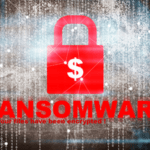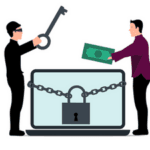The internet is indeed a bustling marketplace, an expansive digital city filled with businesses plying their wares alongside thieves and villains looking to take advantage.
Your company’s online presence – your virtual storefront – faces the very real threats of cybercriminals attempting to infiltrate your systems, steal critical data, and ransom it back to you.
And make no mistake: an attack will happen. The question is not if you will face a cyberattack, but when.
Shockingly, small businesses are frequent targets, with few budgeting for robust security or recovery solutions. This oversight leaves them exposed to potentially business-ending attacks that larger organizations are insulated from.
Consider the primary vectors that leave companies vulnerable:
- Ransomware is vicious, encrypting files and locking companies out until sizable ransom payments are made, often in difficult-to-trace cryptocurrencies. Recovery without payment is frequently impossible.
- Phishing remains startlingly effective, fooling employees into compromising credentials. Once inside, criminals own your systems and data.
- Most small companies invest minimally in security precautions like firewalls or intrusion detection. Instead, they rely on outdated malware signatures and simplistic filters. These are child’s play for motivated hacking groups to bypass.
- Employee training is neglected, leaving staff ignorant of red flags that indicate phishing attempts or other social engineering. Victims unknowingly invite thieves inside the protections companies have invested in.
The implications of a successful attack are severe, ranging from outright data theft to encryption-based ransom scenarios.
Business operations grind to a halt without access to essential systems and data. Revenue stops completely. Reputation burns as customers lose trust.
For small businesses, this can rapidly spell the end if recovery is not swift.
So what must small businesses prioritize to guard against cybercrime?
Knowledge is power.
Educate staff on the realistic threats you face and common entry vectors like phishing.
Foster a culture of security.
Invest in robust protections.
Like next-generation firewalls and gateways, multi-factor employee authentication, endpoint security platforms, intrusion prevention, and threat analytics, defense in depth is key.
Implement automated backup and verification processes.
Retaining accessible backups offline.
These provide options when ransomware strikes, enabling restoration without payment.
Have an incident response plan.
That empower IT teams to isolate, investigate, and remediate threats.
Time is critical when containing attacks.
Maintain cyber insurance policies.
That help offset costs related to losses, damages and restoration efforts.
Even robust preparations may not block all attacks. Determined criminals with enough resources and motivation can eventually penetrate many networks.
But the steps above can flip the odds in your favor dramatically while enabling rapid response and recovery when the worst happens.
To weather the cybercrime storm, small businesses must implement layered defenses to repel and contain common attacks, back up critical data and systems, and have a recovery plan to quickly restore business functionality.
Do this, and your company’s digital doors stay open no matter the threat.





